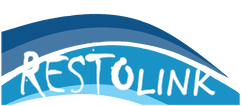|
Restoration approaches to improve the hydromorphology of streams are increasing worldwide but often fail to recover good ecological status and biodiversity. Yet, the evidence for dominant effects of hydromorphology on biodiversity and ecosystem functioning suggests that the strong potential for hydromorphological restoration is not fully explored in stream rehabilitation. We argue that restoration often fails because it does not consider the spatial scales of stream hydromorphology that are most relevant to biodiversity and ecosystem functioning. Moreover, traditional indicators of restoration success based on the composition of biological communities may not show the same recovery trajectory as key ecosystem functions, such as organic matter decomposition and nutrient retention.
|
|
Get involved with the main research questions and hypothesis being tested
|
Get introduced to our group of researchers and partners
|
Publications, blogs, updates and more
|




